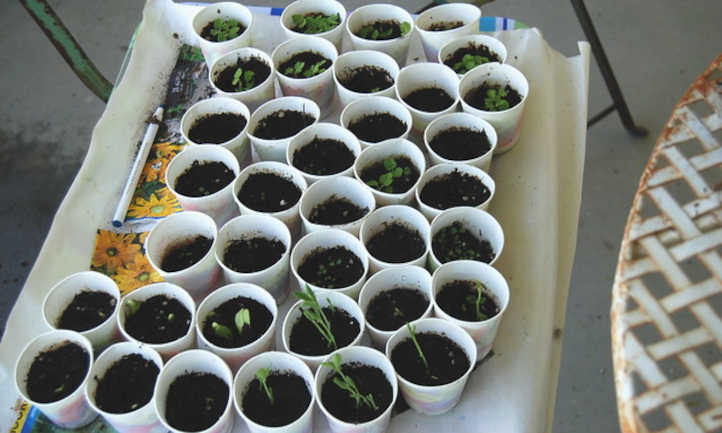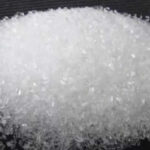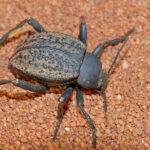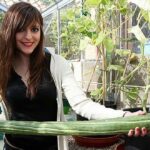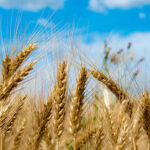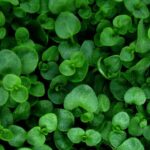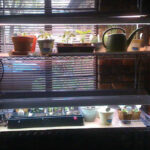If I told you I’d never had problems with seeds not germinating, I’d be lying. There is a learning curve between transplanting starts and helping seeds germinate. A lot goes toward the time to plant seeds. The seed germination process is fraught with many different elements. Issues arise when you first learn seed starting.
But it’s not the end of the world. Plants are miraculous. An entire organism emerges from just one seed. Germinating seeds is a process that may surprise you. As you continuously help seeds germinate, you’ll learn as you go.
But we’re here to address problems that may arise in the seed germination process. We’ll discuss ways to mitigate some of those issues, so you can germinate with an informed perspective on what could happen. Sometimes its conditions present during seed germination, such as the growing medium, and sometimes it’s the seeds themselves. Sometimes you get everything right, but some external force snacks on your seedlings.
Don’t lament if you’re dealing with problems when you are planting seeds for the upcoming season. Let’s learn about starting seeds in conditions that will contribute directly to your success in the growing season.
Germination Conditions Need Adjustment
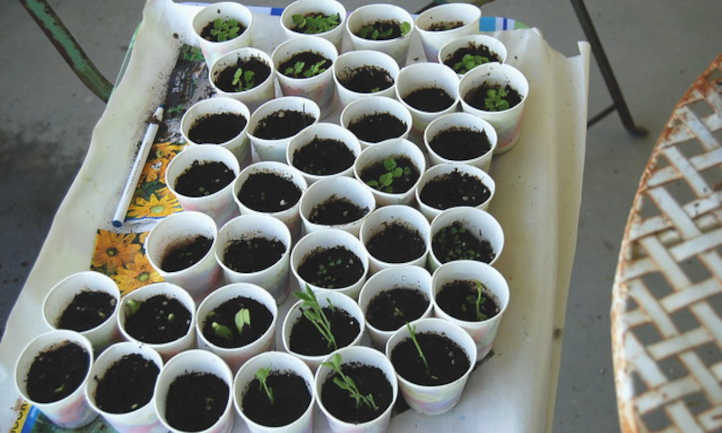
The conditions in which seeds are started have a direct impact on the rate of germination. These, you control with the right attentiveness and tools. Make little adjustments as needed and you’ll easily sprout seeds into plants.
Light and Temperature
Incorrect lighting causes problems. Not all seeds need light to germinate, but some do. Some seeds get the best lighting from direct sunlight, but that’s not always available when you’re starting seeds indoors. Research the species you’re growing to determine optimal light conditions, so certain seeds don’t remain dormant while others germinate. Often issues with lack of sunlight are reconciled with a cheap shop light. Sometimes you need something more specialized, for instance, when growing tomatoes from seed. Fluorescent lights are best in that situation. When it comes to grow lights there are options, so take time to look into which seeds will need what lights if you’re starting indoors where sunlight isn’t available.
Incorrect temperature is often the culprit for problems with seed starting – especially when you’re starting seeds indoors. The vast majority of seeds need a soil temperature that is between 65 and 85 degrees. While that might be the temperature inside your house, if your setup is near a drafty window the seeds may not get the warmth they need. An arctic blast with extreme temperatures could prevent those winter-sown seeds from breaking dormancy. Use a soil thermometer to determine whether or not you’ll need some extra assistance in the form of a plastic tub or container over your winter seeds (if doing winter sowing), or a heating mat under seed trays. Sometimes a grow light is enough to warm up a cold soil temperature and help seeds break dormancy.
Moisture
Directly related to temperature and light is the moisture content of your seed starting operation. Most seeds need a generous amount of water to sprout. Generally, keep the soil moist when you plant new seeds. Large particulates in your soil reduce moisture against the seed itself, so consider this when sprouting seeds (especially in well-mulched raised beds). Think about whether or not your seeds prefer more or less moisture. Reduce watering if you realize your soil doesn’t need to be as wet, and you’re still within the germination period for certain seeds. For instance, instead of saturating, try a spray bottle to mist the soil surface.
In some instances, you might not be watering enough. Certain seedlings require lots of moisture for the seed coat to yield to the dicots within. Constant drying out of your starting mix could have to do with the media, the ambient temperature, and humidity, or with the watering frequency. To germinate, all seeds need adequate moisture. Some need more than you think. Soybeans, for instance, need a moisture content of at least 25% in the soil to sprout seedlings. Measure the moisture content in the soil with a soil meter. If you find you’re consistently having issues with moisture and humidity, a grow tent can help as you’ll have the option to make conditions optimal for germination.
Soil or Germination Medium
The type of media you use feeds directly into the amount of oxygen making its way to your vegetable seeds. If there’s an excess of clay in the growing medium, there may not be enough oxygen and water moving through to start seeds. If you find there is no drainage in the media, amend the soil and start again. Usually, remediation of this kind is possible with quick seed germination, and not as easy for slow seed germination. Seed germination is also contingent on how deep you plant the seeds within the growing medium. Planting depths are generally on seed packets, so follow the guidelines there to determine how deep to plant in your growing medium. Some seeds don’t need much more than being spread on the soil’s surface.
You might have a leftover starting mix that just isn’t suited to get your seeds germinated. By the time you’ve planted and waited, nothing happens and it’s too late to make changes. Some research from reputable sources about how to germinate seeds helps. Some do best when they’re germinated in a plastic bag with a folded towel soaked in water. Chia seeds enjoy clay as a starting medium. In this case, too much organic material prevents chia sprouts. By paying attention to the needs of your seeds, and providing them with a paper towel or clay to germinate, you’ll have young seedlings in no time.
Timing
Even if you start seeds indoors, you’ll stunt seeds if you plant them at the wrong time. So much goes into a season that helps those seeds grow. Light, temperature, and humidity change indoors and outdoors when seasons change. If you plant before the last frost, a drastic temperature shift can kill seeds. One way to boost your ability to successfully produce seedlings is to plant at the right time. Check seed packets and reputable sources for the right timings.
Your HVAC system has different habits in different seasons, too. Maybe you placed your seed packet pre-sprout next to the HVAC outflow and they got too dry and hot to survive. The same goes for your seed trays. You may have neglected them at a window that got too cold based on temperature fluctuations. Regular watering is important, especially in seasons where day and night temperatures vary greatly. But too much water rots seeds before they have a chance to sprout. Organization tools like a calendar, or a spreadsheet that gives you a heads up when it’s time to water help a lot.
Seed-Related Germination Issues
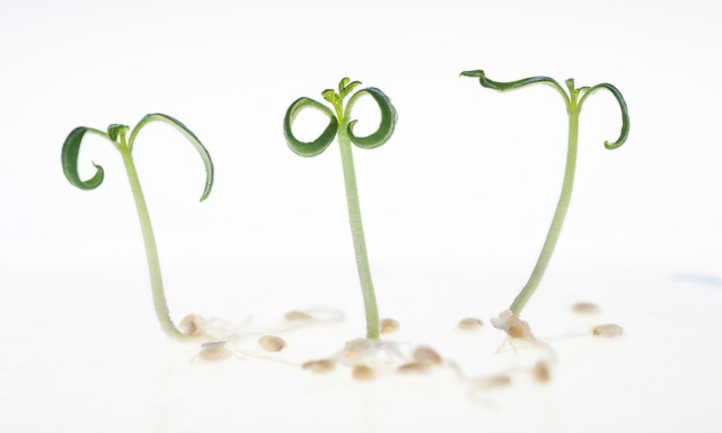
Sometimes the conditions in which the seed is planted aren’t the only culprits for improper seed starting. Seed quality, type, and needs for growth have an impact as well.
Cold-Stratification
Cold-stratification is needed among seeds that require cold hours to start. Many seeds that need a cold strat are wildflowers. For instance, milkweed seeds naturally in fall, overwinters, and sprouts again in spring. If you’ve accidentally planted seeds that need cold hours before it’s time, try again one of two ways. First, seed outdoors in fall, allowing the natural process of cold stratification to take place. Alternatively, put the seeds in the freezer for a time and then continue growing indoors ahead of the transplant in your garden. Some need two weeks of cold, and some need two months. Check your local agricultural extension office or reputable gardening source to learn what period of cold is needed.
Scarification
Maybe you’ve had some nasturtiums that you just can’t get going. You’ve tried year after year, changing soil blends and tinkering with conditions. What you might be missing is a mechanical process called scarification. By scratching the seed coat either via an Exacto knife or sandpaper, you break open the seed, speeding up the sprouting process. There are good lists of certain plants that need scarification at local extension offices and among reputable online sources. If your larger seeds aren’t germinating, check to see if they need a slice or two to germinate.
Seed-borne Illness
If you saw a pack of seeds you couldn’t find anywhere else online, you ordered them, and they never germinated into seedlings, it’s possible the seeds could be diseased. Seed-borne illness results from improper seed saving, and improper environmental conditions in seed storage. Sometimes white mold can form in the fermentation process when saving tomato seeds. Sometimes the distributor isn’t reliable, and you get moisture levels in transit that promote infections that could transfer to your garden. Most good-quality seeds and their distributors won’t have disease issues. Use online reviews to determine whether or not a purchase is a good idea for smaller companies. Be cautious of imported seed, particularly seed from China, as it may not be what you ordered.
Seed Storage
If you have old seeds, check to see if they’re beyond their storage life before you plant them. Seeds that are too old should be replaced with more seeds, instead of planted. Some seeds have a two-year shelf life, other seeds have a five-year shelf life. Seed packets will have expiration dates that tell you if planting is a good idea. Some seeds only have a shelf life of several weeks. If you don’t have the information on hand research to find out.
Seed can be stored improperly too. Certain plants do not like to have seeds stored in cold temperatures or even room temperature sometimes. The ideal temperature for storage is available to you via a seed packet. Another issue in seed saving is ambient humidity. Higher humidity promotes mold that could damage seed, or fungal growth that could be transmitted into your garden when you plant seedlings. In this case, the plant may have germinated, but some disease is present which eliminates seedlings. How you store seeds has bearing on germination.
Germination Rate and Time
Some plants make tiny seeds that have a very low germination rate. Other plants are easy and notorious for sprouting 100% of the time (sunflowers, anyone?). Before you plan your garden, think about the germination rate. Sow those with a lower rate at a higher frequency per hole. Those with a higher rate can usually go right into the garden. There are also times when seeds take a long time to germinate. Many herbs take months before they’re ready for transplant in a garden. Check germination rates and times before giving up.
External Germination Problems
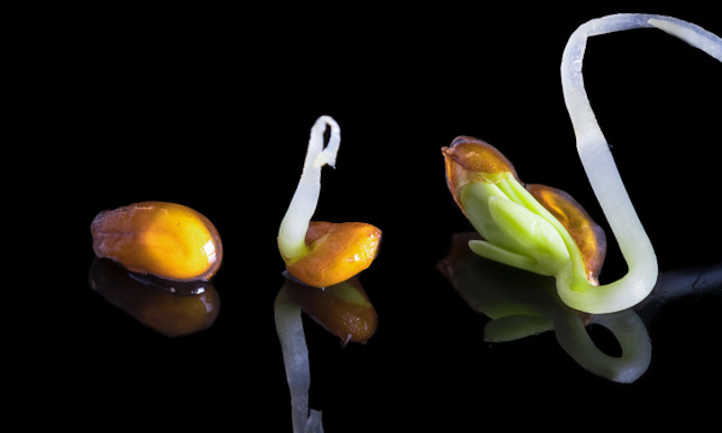
And then, there are your favorite friends in the garden who love snacks. Let’s talk about them and a few other pesky pals.
Hungry Wildlife and Pests
Some plants are desirable to deer, birds, squirrels, and mice among others. Even if you broadcast sow, you might find they think the sprouts or the seeds themselves are a buffet. If you’re going to broadcast seeds, protect each seed or sprout with a barrier. This could be chicken wire around the garden bed or a shade cloth that keeps out any pest that could reach them from above.
Another external but underground issue that could arise is grubs and worms that like to have a chomp on the roots of new sprouts. Treat the soil ahead of time with nematodes to lessen the threat. Alternately, plant these types of crops in containers where grubs and other larvae can’t get them.
Diseases
When you plant seeds in used soil, whether outdoors or indoors, know that you could deal with soil-borne illnesses. These include damping off which is caused by one form of soil-borne fungi. Affected seedlings grow on spindly stems and don’t root deeply enough, and they often break off at the soil level and die. Another thing to look out for is bacterial infections that present similarly to damping off. Just like damping off, they attack after the seed has germinated, making it seem like things are going ok at first, but then your seedlings die in a few weeks. Soil tests through your local extension office can determine if bacterial and fungal infections are present in a garden bed. Check for damping-off especially in cool wet seasons before you plant.
Frequently Asked Questions
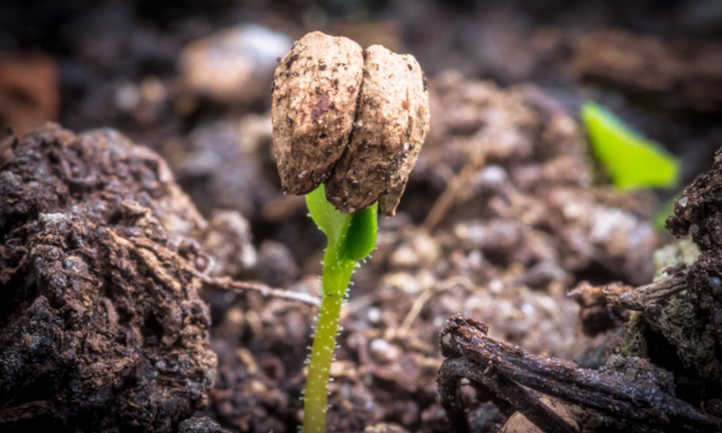
Q: What do I do if my seeds don’t germinate?
A: Take a deep breath, and assess the situation. Determine if the conditions need to be changed or if you’ll need to try again next season. Gardening is a learning process.
Q: How do you force seeds to germinate?
A: Sometimes cold-stratification, scarification, or exposure to high heat and moisture is needed. Do a little research to determine what’s best for each seed type.
Q: Why are my seeds taking so long to germinate?
A: It depends. It could be a timing issue. You might be working with seeds that take a long time to germinate, or you could be growing seeds that have low germination rates. It could also be the conditions where the seed is starting.

